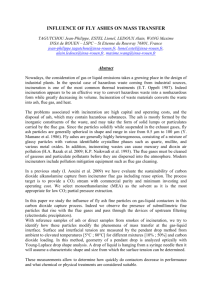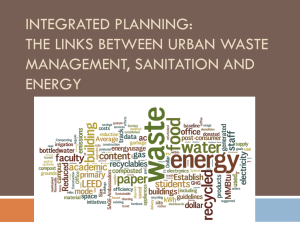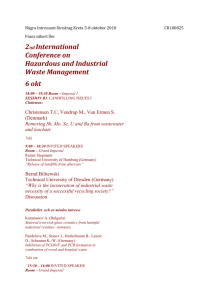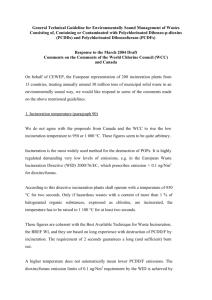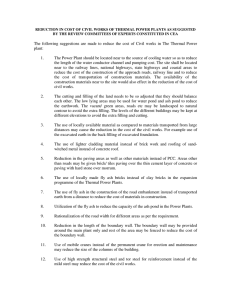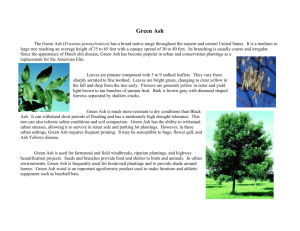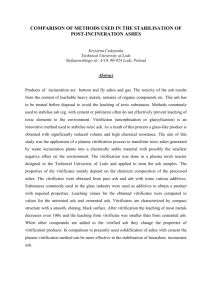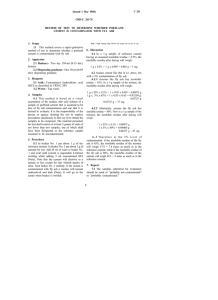LECTURE 12 PRODUCTS OF INCINERATION
advertisement
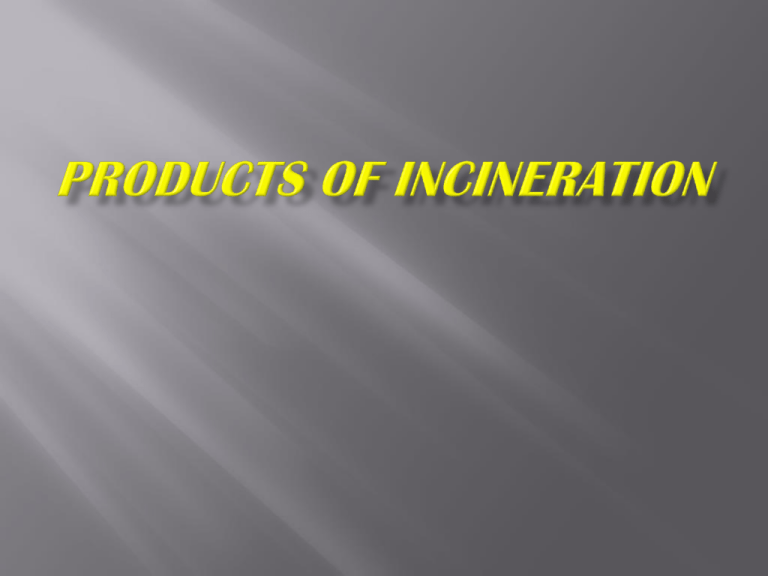
Products of incineration sifting fine material include ash, metal fragments, glass, unburnt organic substances etc.. residue all solid material that are left after incineration remove continuously or in batches clinker and fly ash 10% is the fused ashes, etc.. is use as component of cement, concrete or road making. the fly ash comes from the gas scrubbing unit the quantity of fly ash usually 12 – 15 kg/tonne of refuse also used in cement making, concrete, brick and road making suspended particulates flue gas vented air emitted from a chimney after combustion in burner. It can include nitrogen oxides, carbon dioxides, water vapor, sulfur dioxides, particles and many chemical pollutants (FSL) the equipments used to remove are: the fabric filter – almost 100% efficiency electronic precipitations -96 – 100% efficiency wet scrubbers – 94 – 97% cyclones – 60 – 65% settling chamber – 10 – 30% wetted baffle spray – 10 – 53% waste gas removed via the stack the high and diameter depends amount of climatic and lanscaping of the area heavy metal found in the stack gas, bottom ash, filter dust or in salt and sludges from dust cleaning the heavy metal are: Cd, Cl, Cr, Cu, F, Pb, Hg, Ni, S and Zn. Fraction % Stack gas % Bottom ash % Filter dust % Salt and sludges from gas cleaning % Cadmium 0.04 11 85 3.6 Chlorine 0.12 9 15 76 Chromium 0.01 94 5.8 0.27 Copper 0.01 95 4.9 0.53 Fluorine 1.5 69 3.0 26 Lead 0.01 75 24 0.9 Mercury 2.1 7 5.1 86 Nickel 0.04 87 13 0.61 Sulphur 0.47 50 10 40 Zinc 0.05 49 51 0.7 Acid Gas SO2, HCL and HF can be remove by three methods wet method Dry method semi dry method Wet method Pollutions are removed by large quantities of slaked lime or aqueous sodium hydroxide in Ventury scrubbing system The limestone mixed by two ways: with the waste before incineration introduce separately into the furnace Semi dry method used a spray of lime (CaO) mixed with water into the flue gas flow Organic pollutant – high level of toxicity Persistence in the environment The emission of dioxin can be control with further treated of flue gas by; adsorption onto activated carbon filters catalyst uses: mix metal oxide catalyst destroy the dioxin by reaction with O2 NOx controlled by in fluidised bed incinerator by controlling the amount of air inlet to the cobustion process Where NOx production cannot be prevented, it is remove by the injection of urea or ammonia into the flue gas. Advantages of incineration incineration is sanitary, odourless and dustless residue only 20% of the original weight and can be used for making cement and other materials for construction industry require very little space and very few personnel can be located centrally even within the town and reducing transportation costs. energy production and other by-product could generated revenue ash and other residue are pathogen-free pre sorting and recycle could be incorporated and this reduces the volume to be incinerated Disadvantages of incineration high capital cost and high operating cost take time to plan, design construction require skill personnel disposal of ash require landfill may cause air pollution and long term environmental effect THANK YOU
